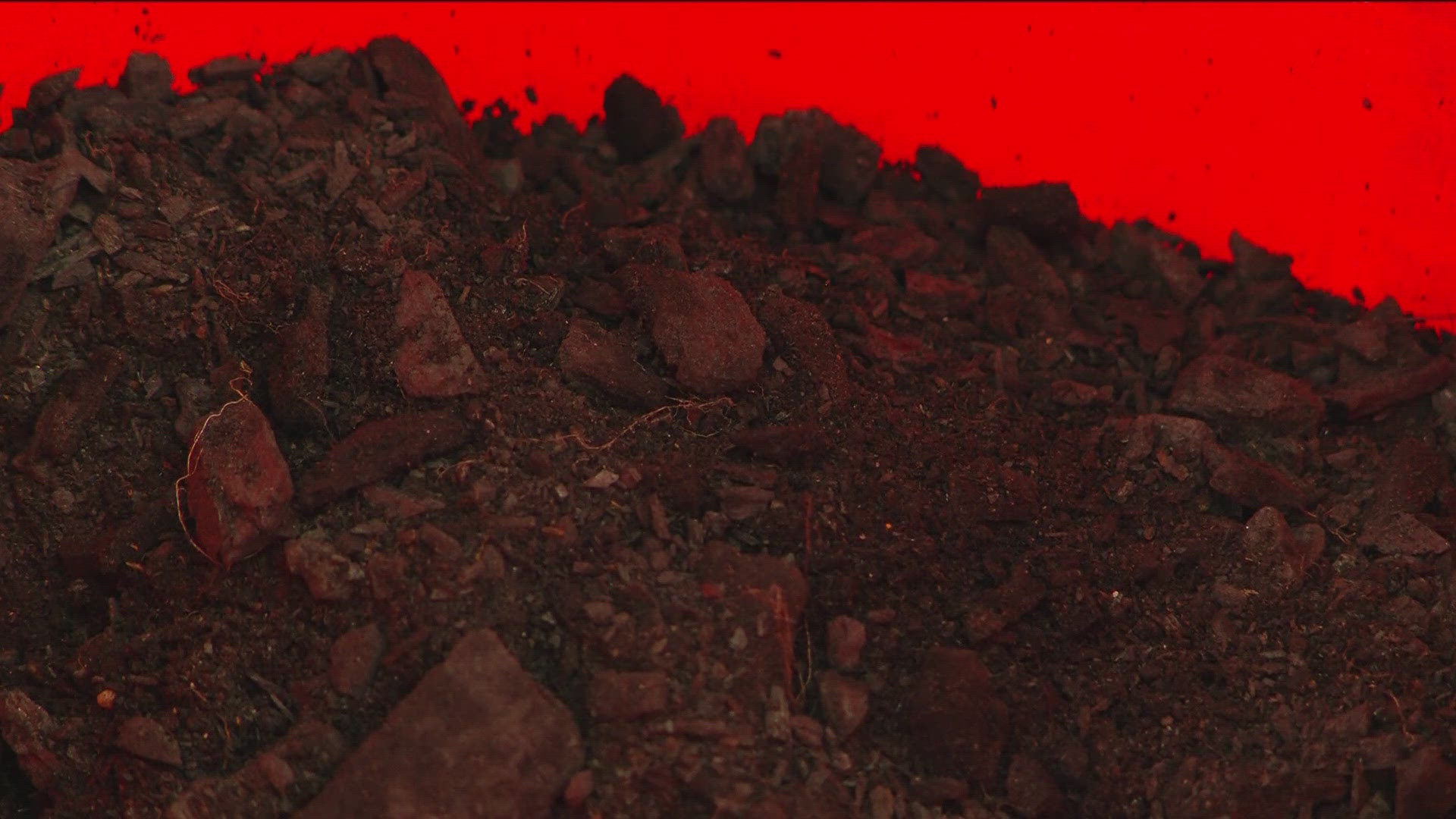MINNEAPOLIS — Minnesota researchers are on the cutting edge of the fight against climate change.
The Natural Resources Research Institute (NRRI) and the city of Minneapolis are using Biochar to clean up pollution from different angles.
But what is Biochar?
“It’s a way to remove carbon from the atmosphere,” explains NRRI researcher Eric Singsaas.
Singsaas and his research team in Duluth are creating this black carbon product by collecting wood damaged by storms and invasive species like the Emerald Ash Borer. Then, they incinerate it in an oxygen-free environment.
The result: small black bricks that look like charcoal, but prevent a more harmful substance from being released into air.
“If you just take a piece of wood and it falls on the ground, it will naturally decay and turn back into carbon dioxide,” Singsaas said. “If you take a piece of wood and you convert it in this process of pyrolysis, into Biochar, it's a stable form of carbon.
That stability is key.
“It sequesters that carbon away from the atmosphere,” Singsaas said.
Once biochar is made, NRRI researchers are putting it to use against an ever-growing list of threats to the climate.
“Biochar is one potential material that can be useful for filtering contaminants from stormwater,” NRRI researcher Bridget Ulrich said.
Ulrich’s biochar work focuses on filtering E. coli bacteria out of water sources and streams before they reach Minnesota’s lakes and rivers. ”But we're also interested in organic contaminants like pesticides and PFAS, so biochar can also act as an adsorbent for those contaminants as well,” Ulrich said.
NRRI is also experimenting with mixing biochar and concrete, attempting to make the construction material more environmentally friendly.
“It improves things like the setting time of the concrete,” Singsaas said.
On the Iron Range, Singsaas believes the steel industry could one day swap coal for biochar in carrying out the forging process. “Coal is responsible for a lot of carbon emissions from those industries,” Singsaas shared.
“The Swiss Army knife of climate tools,” said Jim Doten, Carbon Sequestration Program Manager for the city of Minneapolis while explaining the allure of Biochar.
Standing in a green cit plot known as Ventura Village, Doten explained to KARE 11's Audrey Russo how biochar transformed an eyesore vacant lot into a flourishing community garden.
“We mix it with compost and it makes both of them work better. It’s the synergy,” Doten said. “It really helps hold the water, it helps with the drought resistance.”
Doten is no Johnny Come Lately to the promise of Biochar - He's studied the science since 2012. With help from a $400,000 federal grant, he’ll take what he’s learned and scale it up near the University of Minnesota campus.
“What we’re doing there is we’re building a facility that will turn woodchips into biochar,” Doten told Russo.
The goal is to complete the facility by the end of the year, with biochar production beginning in early 2025. It's a timeline that puts Minnesota ahead of the curve. “Right now, no city has this type of operation,” Doten said. “It’s a great place to be a leader and an innovator.”
Once the facility is complete, Doten says the biochar it produces will be used in Minneapolis and across the entire state.
“To help other governments around the area achieve their climate plans, their climate goals,” Doten said. “Restoration is what I see.”
“It’s not the answer, but it’s part of the answer. It’s a tool in a tool belt,“ he concluded.

